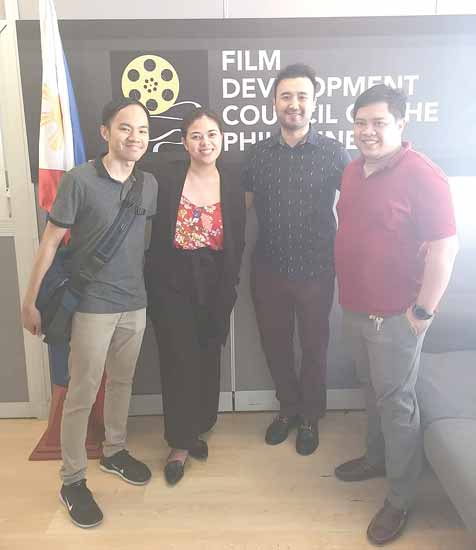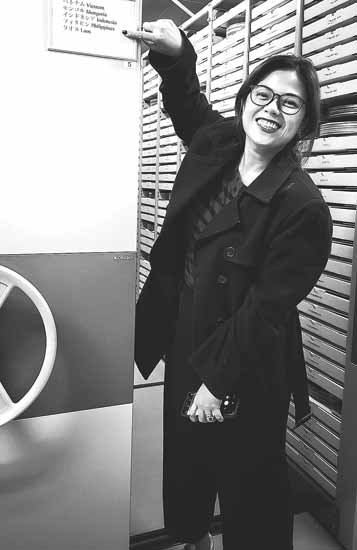The vision for FDCP’s Philippine Film Archive

Film archiving is a preservation of not just elements of works of art, but tokens and stories of an era, memories of a culture, and ultimately, pieces of history. Usually overlooked in the film industry, archiving is a crucial endeavor that entails a lot of technical know-how to be able to clean, scan, save, preserve films.
The Philippine Film Archive (PFA) Division under the Film Development Council of the Philippines (FDCP) collects, preserves, protects, catalogues, manages, and provides access to audiovisual materials, including film negatives and prints, that are part of the country’s historical, cultural, and artistic heritage.
As of July 2020, the PFA Collection count is at 26, 171 elements — the film collection (16mm, 35mm, and super) is at 12,985 and the video tape collection (U-matic, Betacam-SP, Betamax, and VHS) is at 8,753. The audio collection has an estimated 600 open reels and cassette tapes while the digital assets are 833 (DVD, VCD, LTO, and hard drives).
Maintaining the PFA, which is among the mandates of the FDCP, is paramount to effectively archive and protect our cinematic heritage. Around 65-percent of our film copies are already destroyed, with the remaining ones that are unpreserved in danger of damage as each day goes by.

I must admit, in the beginning, I had no prior knowledge about film archiving. What are the essentials? What is the technical process? What is the workflow?
To be able to implement further improvements in the PFA while keeping its limitations and present challenges in mind, I’ve been immersing myself and our team into the world of archiving by connecting with international partners and collaborating with archival institutions to get hands-on experience on the many aspects of establishing the Philippine Film Archive.
Through the French Embassy in Manila, I went on a personalized tour of the National Film Archives of France in 2017 with CNC Director of Collections Beatrice de Patres and Nicolas Ricordel, head of the digital laboratory service and restoration. It was there that I found a 1911 documentary of the Magdapis River Rapids produced by the Pathe Brothers.
We have also established a strengthened partnership with Korean Film Archive (Kofa), through the ASEAN Digitization Project where both institutions partnered in four digitization projects that produced a 4k digitally scanned, color graded and mastered copies of the following titles: “Dalagang Ilokana,” (1954) “Maalaala Mo Kaya,” (1954) “Atsay,” and “Mulanay: Sa Pusod ng Paraiso.” Kofa has also extended support for our in-house archivists by sponsoring an exposure trip for them to visit the Korean Film Archive in Seoul.
Archiving is such a fascinating endeavor and it’s essential to be a member of organizations that champion the importance of cinematic heritage. So in 2017, the agency renewed its membership with the Southeast Asia-Pacific Audiovisual Archive Association (SEAPAVAA) and currently participates as an observer in the Congress of the International Federation of Film Archives (FIAF).
In 2017, I was selected by the Japan Asian Center and Japan Foundation, Manila under its cultural leaders program representing the Philippine film industry. It was a 10-day immersion in the Japanese Film Industry which gave me the opportunity to meet with industry leaders in the various aspects of filmmaking, including archiving. This experience allowed me to connect with the Fukuoka Film Archive, one of the archiving institutions which holds a lot of important Filipino titles.
I remember getting emotional during my visit there, especially when I saw our film reels in pristine condition. Its Filipino film collection has 40 titles including “Noli Me Tangere” (1961) by Gerardo de Leon, “Tatlong Taong Walang Diyos” (1976) by Mario O’Hara, and “Turumba” (1981) by Kidlat Tahimik.
In recognizing and learning how other institutions undertake archiving, the Philippine Film Archive took on an improvement of its internal processes and objectives to align with the goal to not just restore films but also to create a better system for acquisition of films and AV content, cataloguing of our titles, continuous digitization of our reels and video collection, and to establish a media library for the public to have access to these titles.
Armed with this mainstreamed process, from deposit contracts, to database and workflow, we started to reach out to more partners and identify new acquisitions.
In 2019, PFA acquired 4,548 film elements, captured 125 films, scanned 99 film elements, enhanced 35 titles, and cleaned 99 films. We also had recent acquisitions from the UP Film Institute and Radio Television Malacañang.
But while our efforts to sustain our current facilities continue to be a priority, the long-term vision of FDCP for the Philippine Film Archive is a state-of-the-art permanent storage facility. So that’s what we did: to start the quest of finding a property for our cinematic treasures.
With the support of the Department of Tourism, Department of Finance, and Tourism Infrastructure and Enterprise Zone Authority, the FDCP embarked on a partnership for the construction of the Film Archive Heritage Building in Intramuros.
The construction was supposed to take place this year in Beaterio de la Compañia de Jesus, Intramuros, Manila, but due to the Covid-19 pandemic, the plans were temporarily put on hold. The facility will be a 4-storey structure that will be able to cater to the multi-faceted elements of film archiving.
It will have laboratories and working areas where audiovisual elements can be inspected, cleaned, and repaired; digitization rooms for scanning, capturing, and post video-editing; and climate-controlled vaults for film reels and analogue tape materials. It will also have a theater plus a media library for students, researchers, and the public who want to view digitized films.
Despite the pandemic and the halt in some of our plans for PFA, the PFA Restoration Program is still ongoing. The program puts film reel movies back together by rescuing decaying film stock and preserving the film stock’s images.
Since its launch, it has restored many important film titles by National Artists for Film: “Genghis Khan” (1950) by Manuel Conde, “Maynila sa mga Kuko ng Liwanag” (1975) and “Insiang” (1976) by Lino Brocka, “Portrait of an Artist as a Filipino” (1965) by Lamberto V. Avellana, and “Pagdating sa Dulo” (1971) by Ishmael Bernal. These are some of the initial restored titles that have made their way to various FDCP-partnered events and local and international film festivals.
The agency has also branched out in restoring films that are significant to Philippine cinema’s history. In 2017, PFA restored the oldest title in its collection entitled “Zamboanga” (1937) by Eduardo de Castro. The following year, Brocka’s “White Slavery” (1985) was restored. In 2019, two films released in 1980 were restored: “Brutal” by Marilou Diaz-Abaya and “Manila by Night” (1980) by Bernal. This year, the restoration of “Dalagang Ilokana” (1954) by Olive La Torre and Maalaala Mo Kaya” (1954) by Mar S. Torres is ongoing.
Moving forward, we hope to be able to also restore films from the collection deposited by Mister Rap Fernandez, son of the late legendary action star and film producer, Rudy Fernandez. The Rudy Fernandez Collection’s initial deposits were both by Jose N. Carreon: “Tumbasan mo ng Buhay” (1993) and “Matimbang pa sa Dugo” (1995).
Other programs of the PFA include film viewings, PFA Facilities Tour, Home Movie Day, and its partnership with the Pasinaya Film Festival of the Cultural Center of the Philippines.
Amidst the pandemic, the PFA team safeguards our film elements and has deployed a daily skeleton workforce to ensure equipment maintenance of our archival audiovisual materials. I am so proud of how the PFA has evolved into a working film archive that has gone beyond just preserving films but also creating access and pushing for collaboration and partnerships to safeguard and protect the audiovisual heritage of the country.
I would like to call on more filmmakers to coordinate with the PFA for the preservation of their works.
With our vast film history, the government, through the FDCP, expresses its all-out support for the preservation of Philippine Cinema. The FDCP commits to ensure the preservation of local films through the PFA, as well as by collaborating with other archival institutions, so that generations to come may glimpse their culture and history through our Cinema.
Source: https://www.manilatimes.net/2020/08/09/weekly/the-sunday-times/arts-awake/the-vision-for-fdcps-philippine-film-archive/752670/

